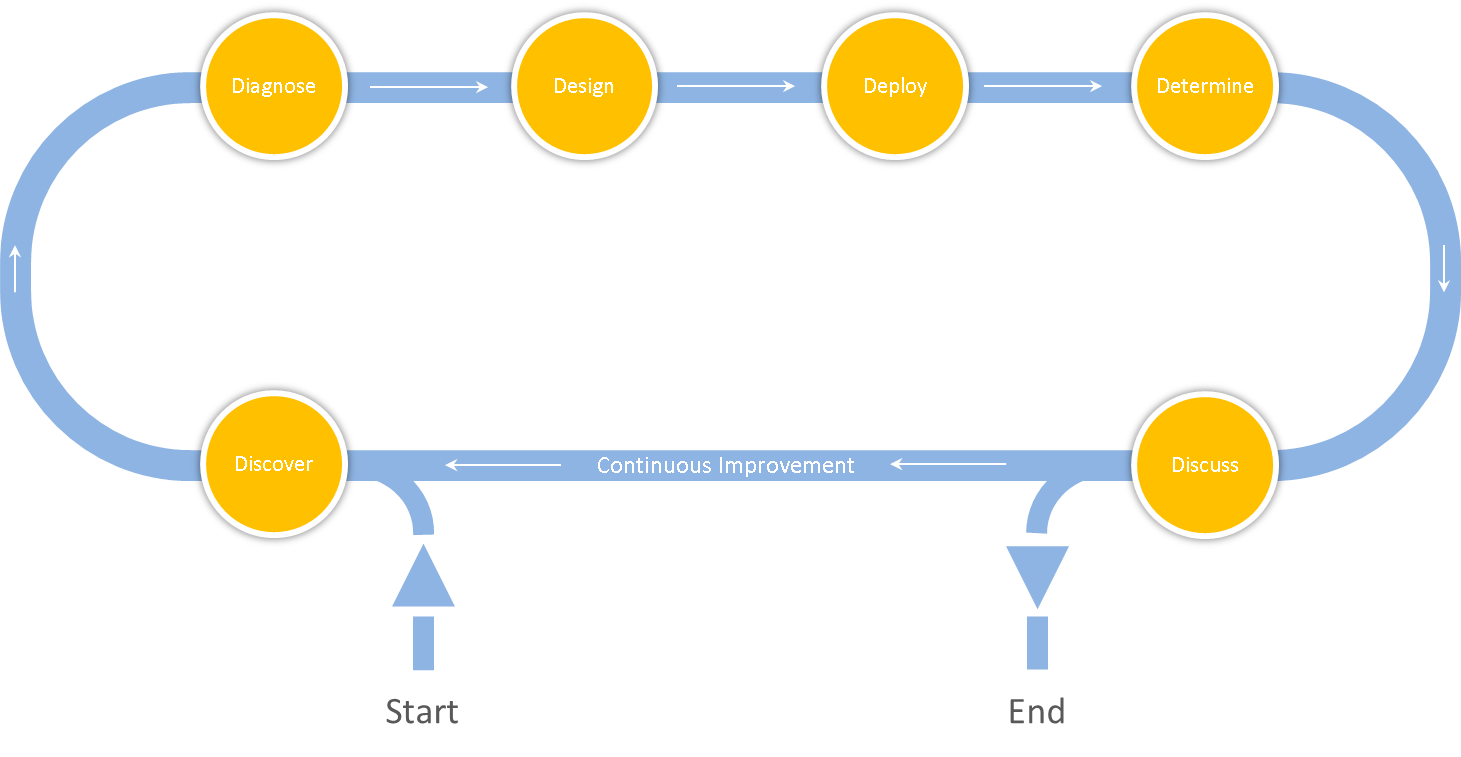The purpose of this framework is to give you an actionable approach – to Service Experience Improvement – that delivers tangible, measurable improvements to customer retention, loyalty and profitability.
It takes you, in a closed-loop, through the phases of insight to action and then to results – and provides a continuous, iterative approach to Service Experience Improvement.
1. Discover, Explore, Listen
- Create context for the subject problem/issue/challenge
- Gather feedback/intelligence/data that represents what your customers want
- Establish an initial scope that can be refined as knowledge is gained
2. Interpret, Understand, Diagnose
- Analyse the data, draw conclusions and understand the customer perceptions/expectations/needs that drive their behaviour
- Agree suitable metrics and measure them (establish a baseline). These metrics should represent the business-performance (in relation to this issue) as it stands at this point in time
- Tip: it is highly recommended to set performance-improvement targets for the subject issue – these targets will be used, later, to measure and monitor the degree of performance improvement
3. Design, Create, Build
- This is where the ‘Action’ phase starts to kick in. Develop solutions and test pilots/prototypes. Solutions don’t necessarily need to be about buying more technology, they could simply be about remedying a broken process or procedure
- Tip: Invite feedback, from the customer group that suffered from the original problem, as the solution is developed & tested – they will value being involved
4. Deploy, Implement, Execute
- Use classic project management techniques to rollout the solution
- Keep appropriate development personnel on-hand to tweak any elements that attract negative customer feedback
5. Determine, Monitor & Measure Results
- After an appropriate period of time, post-deployment, re-measure the KPIs/metrics that were baselined in the Diagnosis stage to gauge the ‘new’ performance results
- Continue to monitor the KPIs/metrics on an ongoing basis until the solution settles down
- Tip: be respectful and tread carefully – if business partners, or other departments, are responsible for delivering a part of the solution then don’t storm in as the performance-police!
- Optional: continue to tweak under-performing elements as and when data/feedback become available
6. Discuss, Assess, Review (review-and-close or review-and-repeat the cycle)
- Compare the results to those targeted in the Diagnosis stage
- Decide whether, or not, the performance metrics are now acceptable. If they are then close-off the project; if they are not then repeat the cycle until performance is acceptable
- Tip: only your customers can be the true arbiters of acceptable performance – ensure that you continue to listen to, and act upon, the voice of your customers
